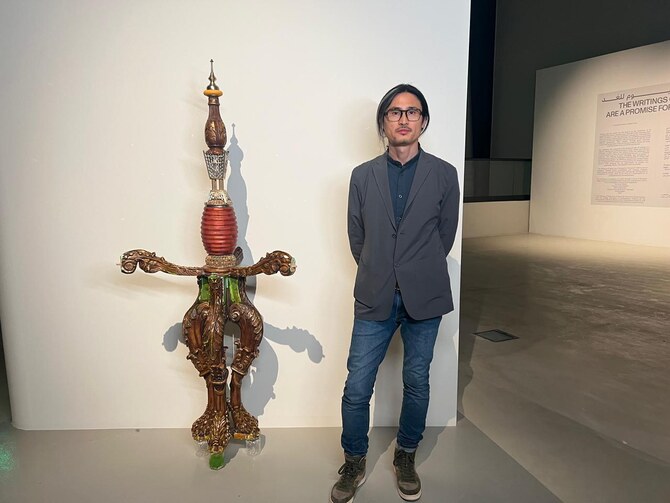RIYADH: A new art exhibition exploring parallels between Chinese and Arab cultures has opened at the Saudi Arabia Museum of Contemporary Art.
Titled “The Writings of Today Are a Promise for Tomorrow,” the exhibition hosted by the Saudi Ministry of Culture’s Museums Commission features work from more than 30 artists.
Curated by Martina Koppel Yang, the exhibition focuses on two elements shared by Arab and Chinese cultures: calligraphy and the garden.
Both cultures regard calligraphy as a significant cultural and spiritual practice, elevating the written word beyond mere communication.
Ibrahim Al-Sanousi, acting CEO of the Museums Commission, emphasized the art museum’s role as a venue for temporary rotating exhibitions rather than a collecting museum. “We aim to integrate contemporary art into everyday life,” he said.
“This exhibition, focused on Chinese artists, is the beginning of a series of collaborations with countries worldwide, aimed at fostering cross-cultural dialogue and international exchange,” he told Arab News.
Artist Dexi Tian shared insights about his creative process, highlighting how he incorporates elements of Saudi culture into his work.
“I use discarded objects that I find during my explorations of the city and desert, reassembling them into new creations that reflect this culture,” he explained.
Wang Du, a Chinese artist residing in France, also spoke about his artwork, saying: “My work doesn’t have a direct connection to Chinese culture; instead, it addresses contemporary media and its impact on society.
“The sculpture you see is made from crumpled newspapers. It symbolizes how we consume news and information in our modern world. Each day, we receive a newspaper, only to crumple it up and toss it aside. This act reflects our habits — while we consume news, it also consumes us in return.”
Wang emphasized the notion of a “throwaway reality,” highlighting how easily we discard information. “Most news is fleeting, and this piece serves as a monument to that short-lived nature of news,” he explained.
The exhibition also explores the connection between the discipline of calligraphy and the natural order found in gardens. In both cultures, gardens are seen as representations of creation — spaces designed for beauty, spirituality, contemplation, and community.
“The Writings of Today Are a Promise for Tomorrow” also conveys aspirations for future dialogues and possibilities, addressing themes of energy flow and synergy. In this context, writing is viewed as a meaningful act of participation and communication.
The exhibition features a thoughtfully designed scenography by Studio GGSV, guiding visitors through thematic stages that explore the dynamics of presence and absence, action and contemplation, memory and imagination.
Visitors will have the chance to view pieces from prominent collections of contemporary Chinese art, such as the Donnersberg Collection and the Dslcollection, alongside site-specific works created in Saudi Arabia.
Notably, the exhibition includes works from French-Algerian artist Adel Abdessemed and Taiwanese artist Michael Lin, both of whom are exhibiting in Saudi Arabia for the first time.
“The Writings of Today Are a Promise for Tomorrow” highlights the ongoing evolution of contemporary art, reflecting cultural energy and bridging the past with the future, embodying the promise of what lies ahead.
The exhibition will run until Jan. 18, 2025, and tickets are available at https://webook.com/en/events/chinese-contemporary-art-exhibition.

































